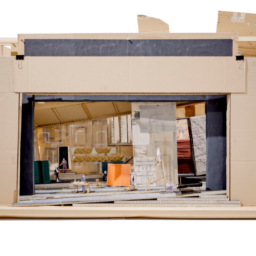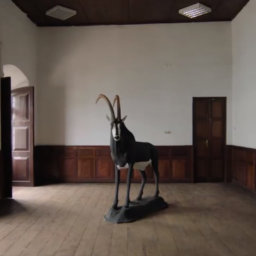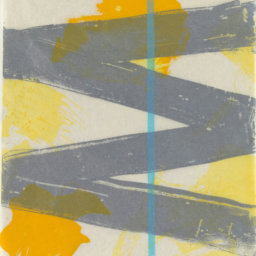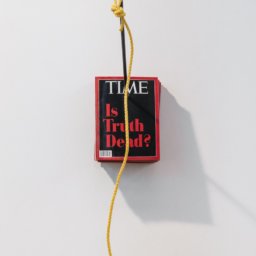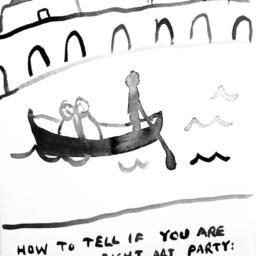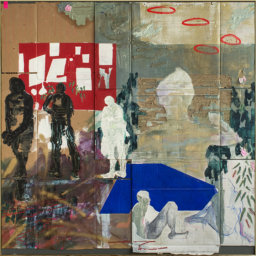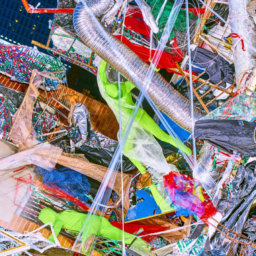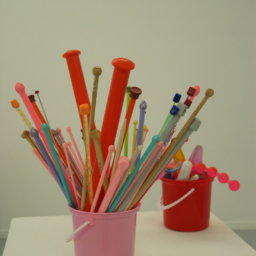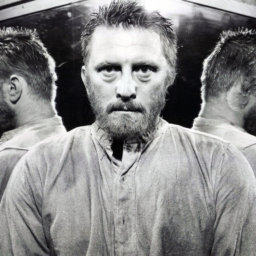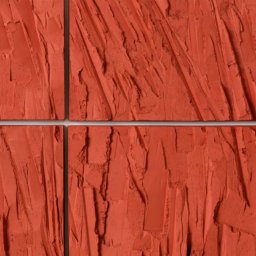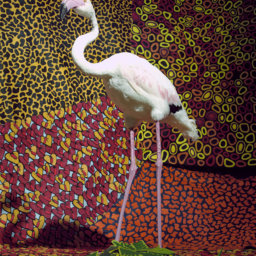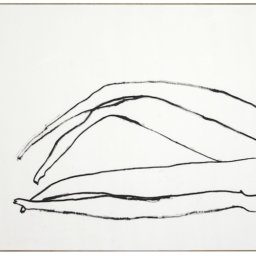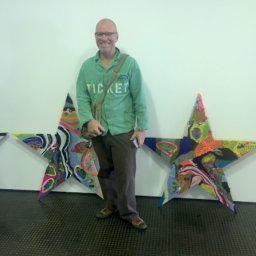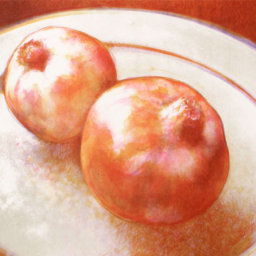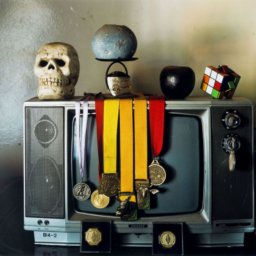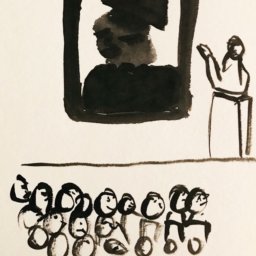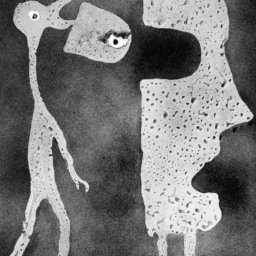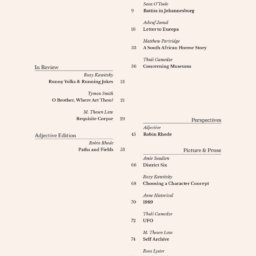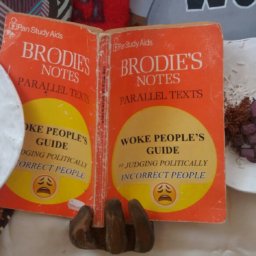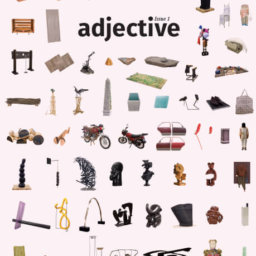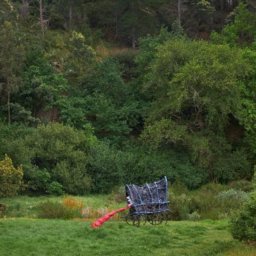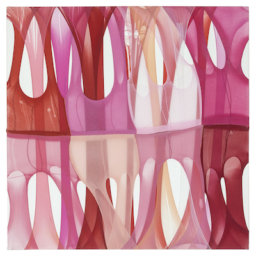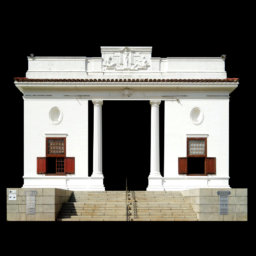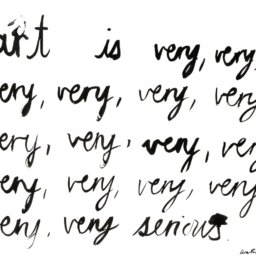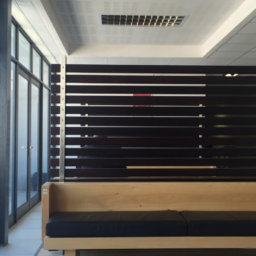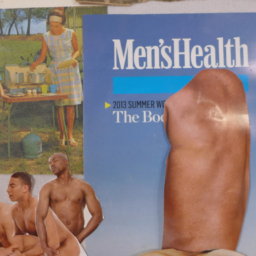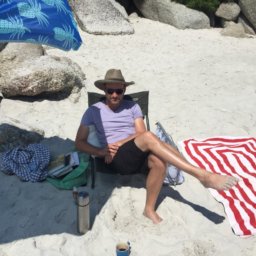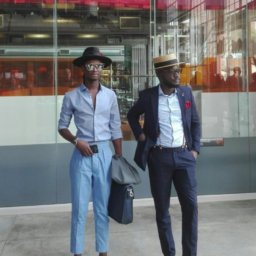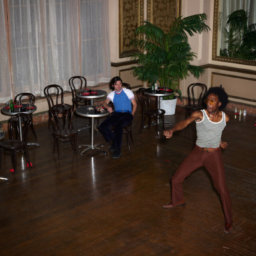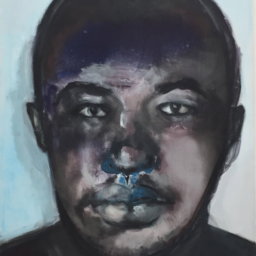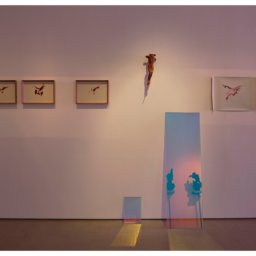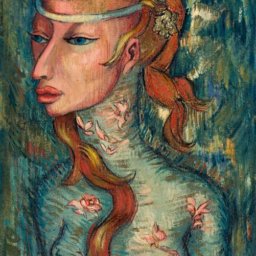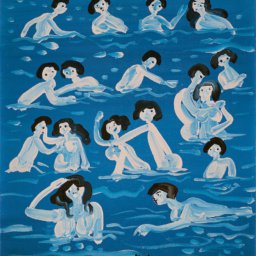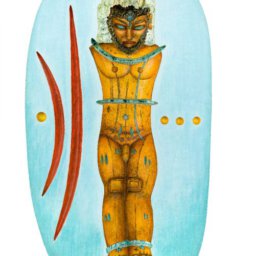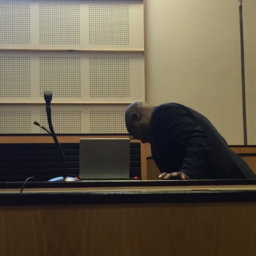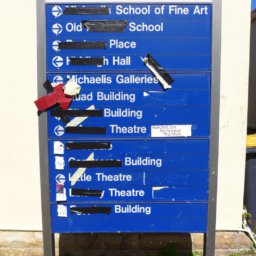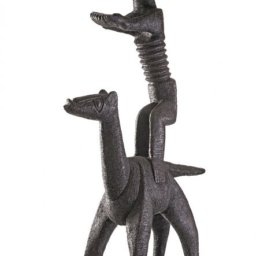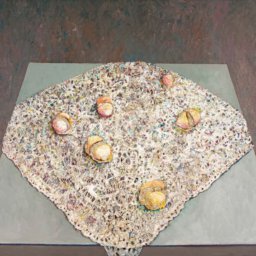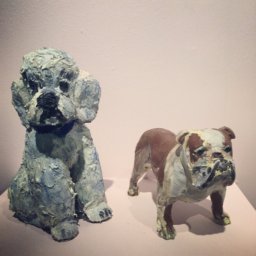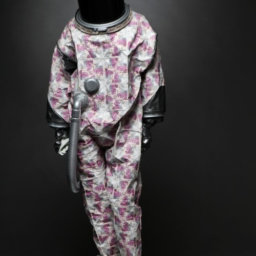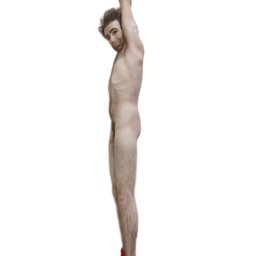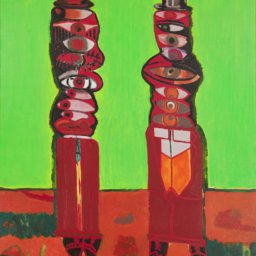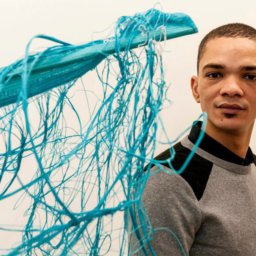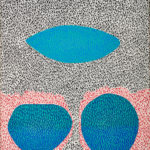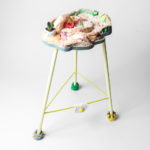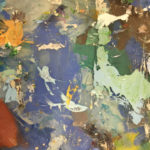‘Words and Urges’:
William Kentridge’s That Which We Do Not Remember
Exposed threads of unfamiliarity and destabilised meanings, which unravel interpretations that may have felt straightforward at first glance. William Kentridge’s latest solo exhibition, That Which We Do Not Remember, shares in the concrete/abstract dichotomy that exists throughout his far-reaching practice.
On Kiluanji Kia Henda’s Havemos de Voltar (We Shall Return)
Sometimes traumatic histories are easier to work through when they’re the subtext to a story about talking animals. And sometimes talking animals provide more nuanced and empathetic entry points than historical accounts do.
Dolcefarniente: Sweet Doing Nothing
I arrived at David Krut Projects’ unlikely suburban bureau in Newlands on a wintry night and, parking between two swaying pine trees in the pitch dark, I half wondered whether I’d made a wrong turn. Crunching my way towards a soft murmur that had all the trademark intonations of artspeak, I was glad to…
On The New Parthenon
I walked into a little side room. A woman saw me enter and followed behind with interest. On two tables were two screens. I walked around them and then stopped, standing next to her, watching a Lo-Fi video of a woman throwing plates across a room. A silent minute passed, us strangers standing together attempting to parse the work’s meaning. She turned to me, “Do you understand what’s going on in this exhibition?” suppressing frustration, “I can’t make sense of any of this.”
Pieter Hugo: Flat Noodle Soup Talk
Thus are we drawn into Hugo’s distinctive, contemplative and quietly human series of photos which combine still-life, group shots, portraits and a few nudes to thread a complex journey through the cracks that have been thrown up between China’s history and its rapid embrace of modernity.
The Parliament of Bodies: Some Thoughts
I felt that these were the moments to grab, in which the connections- sexual, economic, cultural and political- could be made between current anti-immigration fueled hyper-nationalism, and the history of global colonialism including slavery, and the continued exploitation of the global south. As Kilombo stated, we need not look for new information, but rather opportunities to weave together a widely contextualised understanding of what we have to see as a global crisis.
Something from Nothing
Immortalised by William Shakespeare’s King Lear, the phrase “nothing will come of nothing” has been on the minds of philosophers for centuries. Its trendy latin equivalent, nihil fit ex nihilo (or just ex nihilo if you’re into the whole brevity thing) speaks of the cosmological debate that goes all the way back to the origins of the universe, and is sometimes used to argue weighty topics like existence and the possibility of a omnipresent being that some like to call God.
Opening Tonight: The South African Pavilion
57th la Biennale di Venezia
The South African Pavilion opens tonight at the 57th La Biennale di Venezia with Candice Breitz and Mohau Modisakeng representing the country in what is arguably the Olympic Games of the Art World. In lieu of a review, adjective brings you a cartoon and a quick cruise through the canals of social media.
The Agony and the Ecstasy (1965)
Director Carol Reed will always be remembered for The Third Man but his portentous and slow and very sexless, sanitized version of this particular chapter in the life of an artist who continues to inspire awe and amazement in those bitten with the artistic bug is not his finest moment. Props though to the art department who, not permitted to film the actual Sistine ceiling, recreated it on a sound stage at the Cinecitta studios.
Non-people people: Elize Vossgatter’s ‘Limp’
It is whiteness which Vossgatter considers – a whiteness reduced, repackaged, strung together along a conveyor belt. As to where these limbs are destined is unknown – they simply hover, mute, as if frozen in place. The simplicity of this spinal installation is unsettling.
Pre-requisites to the Human Chain
It’s worth a reminder that advertising has long flirted with the aesthetics of collective activism, stirring our inner insecurities and hopes for a better future with the purchase of a perfect ice cold beverage. While it is easy to lament the mis-steps of Kendall Jenner, no stranger to the exploitation of personal or collective fame, one might do better to examine a history of advertising designed to co-opt and manipulate idealism.
Widget: Jake Singer’s RGB Sky
This age, our age, the post-post-industrial digitised age, now possesses its own timeline and geology – The Anthropocene – which defines an earth and a civilisation governed by human impact. It is this man-made morph which Singer places centre-stage. His combines – which includes rocks – reveal the new splice of Man and machine, geology and polymer, which Wired magazine dubbed the ‘Plastiglomerate’.
Questions of Scale
These proximities and distances are at times difficult to reconcile, bringing into view the incommensurable economies of the image. I own two of Abongile’s drawings; I am not his only collector. I wonder what the work would perform if placed inside one of the exhibition spaces. Would this disrupt the fragile economy in which it already exists?
Barend de Wet
After pulling up my handbrake, I asked De Wet about his fascination with colour. Why? What is its yield? He looked at me through his Gene Hackman glasses. It is the material in its truest form, he said, passenger door ajar. It is paint as paint, nothing else. It just is. No complications. He slipped out my car, and was gone.
Art Films: An Introduction
Staid, socially functional, artists are of no use to filmmakers – you’re far more likely to see a Wayne Barker biopic than you might a film about William Kentridge any time soon. Dionysian impulses and antisocial behaviour are what will get your artistic biography the seventh art treatment – audiences want to see you drinking yourself into a stupor at 11am surrounded by empty wine bottles and unpaid rent bills rather than calmly sipping tea in Constantia contemplating your next still life with cosmos.
The Big Hole: Negative Space at WHATIFTHEWORLD
No land can stand unoccupied. And occupation is at the discretion of those in power. Even if that occupation requires spaces to be forcibly empty; like acres of unused lawn, or the underside of highways, or park benches with polls which prevent people from stretching out. All space is contested.
Late Stage Capitalism Luxe
The glib, jaded self-reflexivity present in Paulsen’s language is essentially the same as that which might crop up on one’s Instagram feed daily. It is a language that has been developed in the crucible of the internet and social media, with the capability of conveying complex ideas through the film of an assumed shared cultural understanding.
If You Have Stage Fright, it Never Goes Away
Jared Ginsburg’s Interludes plays with that stuff and the limits it describes. The title of the show holds two meanings in concert, referencing an intermission between acts but also a smaller secondary action taking place during that period. In Ginsburg’s terms, an interlude is a pregnant sort of pause…it’s waiting for something to happen while also holding that something at bay.
Editorial
This past weekend the South African art world had the tragic news of the untimely passing of Barend de Wet. We first met in 2008 at Studio 2666 in Commercial Street, just behind parliament in Cape Town. Barefoot and dressed in a skimpy bathrobe, he was demonstrating his mad yo-yo skills. He was very good – a world champion.
The Human Gesture
This does not stop me from longing to stare into the abyss, as Dante did and “see how all the pages of the Universe are bound by love, into a single volume.” Substance, accident and mode unite, he tells us – a serviceable definition of an artwork, surely, and one that holds out the promise of wholeness, while one gets out the paper and sharpens the pencils, and wait.
New Futures on Auction
The record breaking numbers of Strauss & Co’s sale that took place last week in Cape Town tell a tale of a buoyant market place where established precedents are continually met by receptive buyers and fueled by savvy sellers. As a way of framing some of these highlights I want to make some art historical observations in order to illustrate the character of growth that the secondary market place is currently enjoying.
Creepy Crawly
Rosa Lyster
Today adjective presents the first installation of Picture & Prose, a new section dedicated to experimental writing that takes it cue from an image of the authors choosing.
Here’s Rosa Lyster: “I couldn’t work or write or do anything normal at all. I was fully, fully convinced that I had fucked up my entire life. I knew this was not rational, but I could not help it. ‘Why didn’t you try and get a job?’ you say. No. If I tried to get a job, I would fail, and then everyone would know that I was doomed”.
Editorial
Matthew Partridge
Instead, adjective will let you make up your own mind by way of a new section; Picture & Prose. If you haven’t got Issue 1 yet, then this is probably your first time hearing of the idea. It’s quite simple really; taking off the blinkers of orthodoxy by ignoring ‘art’ for a second, it presents a section of writing devoted to the space between words and images. First up is Rosa Lyster, taking angry swims and feeling 25. And in another first, because hey, life is full of firsts, adjective would like to introduce our readers to the cartoons of Georgina Gratrix. They also feature in Issue 1, so sorry internet you won’t be able to see those ones here.
Roger Ballen: THE THEATRE OF APPARITIONS
While Ballen’s attention to the composition of the photos is typically exact and while the departure into abstraction has created unique images that will become quickly part of his distinctive oeuvre, it’s difficult to appreciate them in the same way as his previous work.
If You Go Out Into The Woods Tonight
This evening adjective will be hitting First Thursdays in Cape Town with our first printed edition, Issue 1. If you’re interested in getting your own copy, come to SMITH tonight where you can check out some of the surprises in store. (Hint: the magazine contains a limited edition artists print by Robin Rhode whose exhibition Paths and Fields in currently on show at the Stevenson in Cape Town).
Michaelis in the age of FMF: Inside Operatives
2016 presented a long overdue dialogue at UCT’s Hiddingh campus. Almost half of the academic year saw its occupation by the intervention collective Umhlangano, a mixture of artists, actors and theatre-makers whose frustration with institutional culture pushed for an urgent necessity in re-politicising an art institution that has slotted itself so neatly into the kak rainbow nation politik of post-1994 South Africa.
Editorial
adjective.online has been quiet for a little over a month. We’re sorry. But while ‘away’, dormant, silent, whatever way one might choose to describe internet silence, adjective explored the translation that occurs in the shift from online to paper. A compendium of sorts, the magazine features a highlights package with a few surprises. But before we get there (watch this space), here is a love letter to the vast world of dematerialised information affectionately known as the Internet.
John Berger – A Life on the Page
Criticism, be it fusty essaying of this sort, or the jazzy punditry of Facebook, is an accessory practice. It is saying, not doing. What distinguished Berger was his attempt to weld the two possibilities – saying and doing – together.
Bloed Trek
Contemplative, each bowed in their own peculiar world, their mind’s eye drinking in a green escarpment bedecked by a mountain cocked like a jauntily crumpled hat. The scene is benign. Not all of this is man-made, nature is not always unforgiving, and Burchell should have plucked that mote from his jaundiced eye.
Big Ideas & Vague Sentiments
There are certain traces, scars even, left behind when a work uproots itself from the contexts of one space and installs itself in another. While the historical figure of the explorer might still hold some credence in the artist’s native Italy, in South Africa we’ve grown a little more wary of the idea over the last 529 years.
Editorial
Instead of relying on the outdated distinction of theory and practice (a fundamental injustice to both streams of making) one should see the two as inextricably linked. Art criticism is about the joy that one can find in meaning, however idiosyncratic, that lies at the heart of the object left behind once the artist has taken their leave.
Requisite Corpse: The Dirty Monster of Dr. Frankenstein
In a way, there is no figure or body at all – only the bits that get left behind, and the bits that get taken with it. It is only ever partially visible: cloaked in curtains and semi-translucent membranes or traced out but long gone; imprinted through blood, earth, sweat and soap scum, bra cups and laddered tights; waterlogged and inaccessible; enamelled out of existence; obscured with dollops of paint or barely painted at all.
Concerning Museums
On Thursday 15 December 2016, Iziko National Art Gallery, and the New Church Museum were forced to create a space for voices to respond and react to the recent show ‘Our Lady’ (since taken down) in a public discussion forum. The discussion included the curators of the show from both museums, activists from SWEAT and Sisonke, artists included in the exhibition, observers, and those wishing to share their thoughts.
On Nicholas Hlobo’s Sewing Saw
It is not typical for Nicholas Hlobo to title his exhibitions in English. His solo exhibition Sewing Saw, his first at STEVENSON since the opening of their Woodstock premises in 2009, is in many ways a re-examining.
A South African Horror Story
Google Nokuphila Kumalo’s name and you’ll find no photographs of her. Instead you will find repeated images of the photographer, Zwelethu Mthethwa, who stands accused of her murder. Mthethwa doesn’t like having his picture taken. Photographers rarely do. They prefer being on the other side of the lens, taking images of others.
A Tally of Culture Making
In late October, around the time finance minister Pravin Gordhan delivered his mid-term budget speech in parliament and student protestors used brick paving to register their anger on the streets outside, a group of University of Cape Town students were planning something. I don’t know whether to call that something a party or an exhibition. Actually, it was both, and neither.
Jaco van Schalkwyk
JVS: No, this time of the year I try to come as much as possible. I go into a summer working schedule where I start at the beach to write, then go to the studio and come back to the beach in the afternoon. It’s a way for me to keep working but also feel like I’m on holiday. I am quite tired at this time of the year.
Black Portraiture[s]: Day III
Is there a correct Africa? And who decides which is the more apt? The plague of ideologues of course.
Black Portraiture[s]: Day II
As the poet’s grandmother said, ‘When you take off the school blazer so do you take off the language’, for South Africa’s cultures remained opposed, bi-polar, essential yet in transit.
Black Portraiture[s]: Day I
Nothing feels good right now, nothing is wholesome, equitable, reasonable, or honest. Self-hatred and the hatred of others is omnipresent worldwide.
Avengers, Assemblage!
After shop names like Urban Spaces, Rumour Has it, Occulus Interiors, Interior Solutions; Blank Projects rolls quite smoothly off the tongue.
Darkness Visible
In a society ground down by conviction, protest, anger, outrage, hurt, misery, frustration, confusion, despair, and worst of all, nihilism, a society unnervingly determined by a death instinct, Botha chooses to give us life.
Auction Time #3
At this point in time it would be a far cry to say that Stern’s bubble has come anywhere close to popping. It would rather be fair to say that the secondary art market would indeed want nothing less; when a bubble pops, uncertainty ripples and the chain of events can be devastating.
Auction Time #2
The results of Aspire Art Auctions debut sale are in and the numbers tell a story of an art market that is ready to come to the party…almost.
Auction Time #1
Irma Stern has long dominated the secondary art market in South Africa as well as featuring abroad with the auction houses of Bonhams, Sotheby’s and Christies all having prodigious sales records of her work.
Editorial
In other news, as the attention of the country was firmly fixed on the proceedings of the Northern Gauteng High Court where the UDM, the EFF, the DA and COPE all sought to have Citizen Number 1 and his cronies’ interdict against the release of the #statecapturereport quashed, a different kind of drama played itself out in the Western Cape High Court.
Simphiwe Ndzube
In this issue of Perspectives, adjective talks to the recent winner of the Tollman Award, Simphiwe Ndzube whose show Becoming is currently on show at WHATIFTHEWORLD, in Cape Town.
Fatally prejudiced
Who is his teddy bear cocking a finger to? Why are his dwarves, dressed in blue and red short-sleeved t-shirts and white jockey underpants – a favoured dress code – hating and loving each other so? As for the artist dangling from a nail? The piece is called My Gallerist Made Me Do It. Really?
The Impoverished Visual Choreography of Refusal
Students allied to the Fallist Movement are currently lightly occupying Hiddingh campus, an outlier property of the University of Cape Town where its art and drama schools have long been quarantined in an eccentric warren of colonial buildings.
Reading New Economies
When it comes to the secondary art market, the real picture is revealed in the results. By the looks of those coming from Strauss & Co’s Monday night sale, the picture is bright.
Deborah Poynton
This week adjective speaks to Deborah Poynton about the relationship between abstraction and realism in her show Picnic that closes this weekend at the Stevenson.
Inbetween Vintage & the New
But the thing about the art world, especially when it comes to auctions, is that it operates on a different economy that is not always subject to the same pinched nerves that the premature unseating of a finance minister might bring to the market place.
An irrational history of failure
Is it too early for Adjective to be self-reflexive? Probably. Does this mean it shouldn’t be? Hell no. Here, at the outset of its indeterminate journey, self-awareness is crucial.
Ernestine White & Yentl Kohler
In the fourth installment of Perspectives, adjective speaks to Curator of Contemporary Art, Ernestine White and Art Educator Yentle Kohler about the collaborative effort of mounting Studio at the Iziko South African National Gallery.
O, Brother Where Art Thou?
With spring seemingly arriving and the smoke and shouts of student protests apparently fizzling out, it was time last Saturday to take a saunter down to the Goodman Gallery for an opening.
The Art of Disruptions: Some Reflections
On Thursday 22nd September I attended the opening reception of the exhibition The Art of Disruptions at the Iziko South African National Gallery. To be frank and to assume a contested, reflective position in the practice of art criticism, the exhibition was neither compelling nor disappointing in its curatorial narrative and comprehension.
Lizette Chirrime
The third installment of Perspectives features Mozambican artist Lizette Chirrime who will be exhibiting later this year at 1:54 in London and whose show “A Sinfonia da Alma Liberta II” (Sounds of a Free Soul) is currently on view at Worldart.
What’s Cooking, Good Looking?
If museums absorb the taste set by the primary market at the time, then auction houses are the fancy restaurants where collectors go to eat.
Hunger Artist – Kate Gottgens
Kate Gottgens is South Africa’s master hunger artist. No one has better conveyed the crack and the hollow that fissures and empties experience.
Igshaan Adams
The second installment in Perspectives features artist Igshaan Adams who talks to us about his show Oorskot, currently on view at blank projects in Cape Town.
Home Truths
‘Private life’ seems like a concept that is almost as outmoded as, if not the CD, then perhaps the cassette tape.
Letter to Europa
Letters, hand-written, stamped and posted, are archaic throwbacks to a culture we nostalgically dub ‘slowness’ – slow food, slow beer, slow sex, slowed down hand-made things. The art gallery however has remained largely immune to this threat to slowness.
Santu Mofokeng: Stories 2, 3 and 4
Curated by Joshua Chuang in collaboration with the photographer Steidl’s stories series presents images from Santu Mofokeng’s archives which compliment already published and exhibited work.
Frank Kilbourn
The first in the Perspectives features an interview with businessman and collector Frank Kilbourn who is the newly installed chairman of Strauss & Co.
Battiss in Johannesburg
Two dissimilar, and each in their own way engaging exhibitions in Johannesburg, engage with the mythic figure of Battiss, a big-hearted adventurer and nonsense-maker from an era known for extreme baloney, and worse.
Runny yolks and Running Jokes
In Marlene Steyn’s Your Skin is Not the Best Hiding Place, there is scant distinction made between painting and sculpture. The work slithers freely between two and three dimensions, flippantly slipping in and out of frame.
